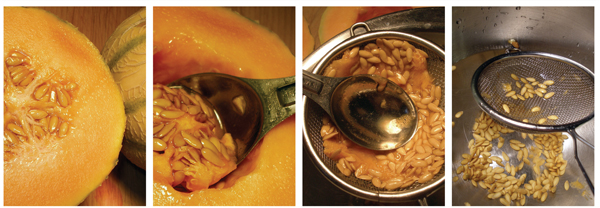 My garden usually begins in December, when the first batch of seductive seed catalogs slip through the mail slot. I hide them in a special stack far from my husband’s rolling eyes. Once five or six varieties of direct-mailed garden goodness have been collected, I tear through them in one delightful binge.
My garden usually begins in December, when the first batch of seductive seed catalogs slip through the mail slot. I hide them in a special stack far from my husband’s rolling eyes. Once five or six varieties of direct-mailed garden goodness have been collected, I tear through them in one delightful binge.
I make lists. I spend too much money. I feel satisfied, but a little guilty. Despite one’s best efforts to buy local, the fine print often reveals seeds shipped from Germany, India and the Netherlands. There is an obvious solution to this conundrum: Save your own seeds.
It’s pretty easy, though some seeds are easier to save than others. Let’s start with the basics: beans and tomatoes. These self-pollinators make worrying about cross-pollination largely unnecessary. For beans, simply allow the pods to dry completely—it usually takes a month or two after the ideal eating stage has passed. Then simply break the pods open and allow the seeds to finish drying.
If you read last month’s column, it should come as no surprise that it’s slightly more complicated to save tomato seeds. Slice a ripe fruit in half and scoop out the seeds and pulp. Eat the rest of the tomato. Place the pulpy seeds in a jar with a little water and cover it with plastic wrap. Give the seeds a stir or two throughout the day for the next few days. The goop will ferment and the good seeds will sink to the bottom of the jar. Pour off the goop, place the seeds in a mesh strainer and rinse them with cool water.
If you’re feeling a little bolder, give radishes and muskmelons a shot. These guys rely on bees and other insects for pollination, so to prevent compromising future yields, you’ll want to make sure you only have one variety growing in your garden before you decide to rescue seeds.
Allow three or four radishes to blossom and when the seed pods turn brown, harvest. Simply crush the pods in your hand and sift the seeds from the chaff. Muskmelon seeds can be treated a lot like tomato seeds, though there’s no need for fermentation. Place the seeds in a wire strainer and smush the goo into the compost bin. Then rinse them under running water. Put the seeds in a bowl and cover with warm water. Toss the floaters. Rinse some more.
In general, you should save seeds only from healthy fruits and vegetables, as diseases easily infect seeds. Once your seeds are thoroughly dried, store them in a cool, dark place.

